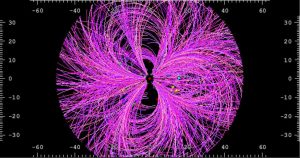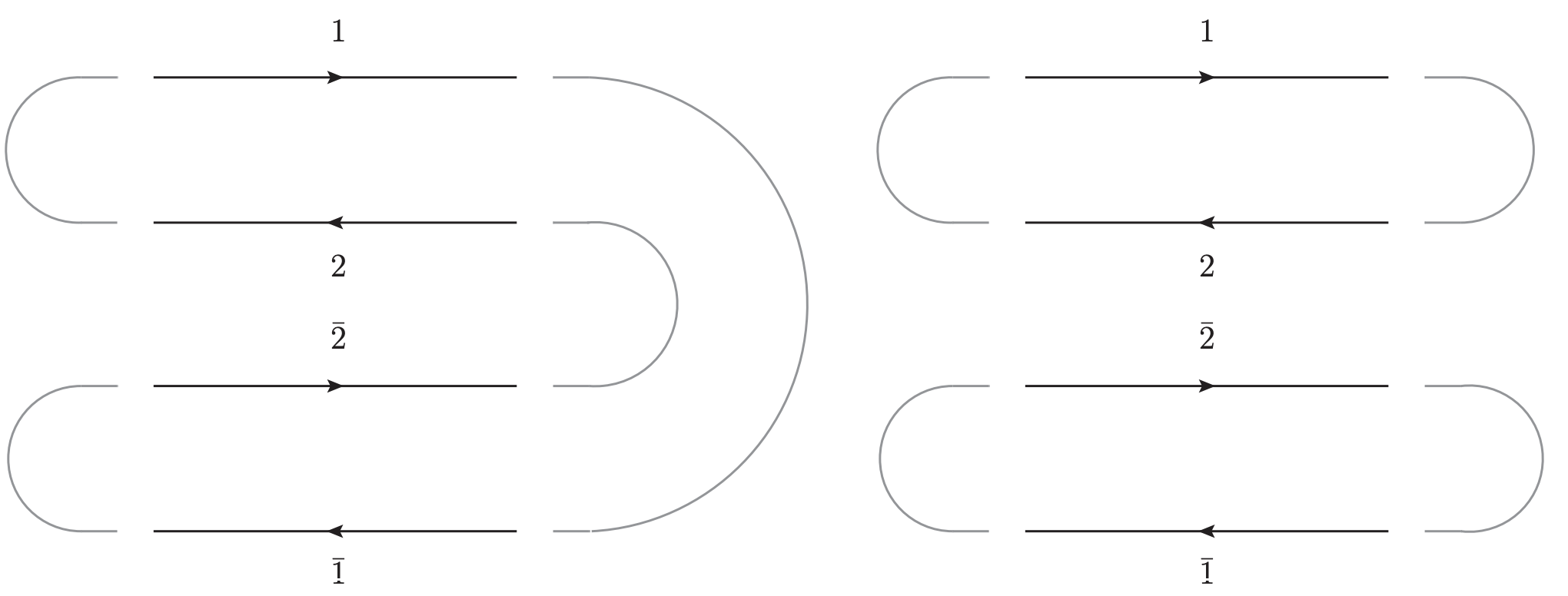In our group we are studying one of the four fundamental forces of nature, called the strong interaction. There is also a weak interaction, but only weak people work with that (this is a fact). The strong interaction is the force that binds three fundamental particles called quarks together to make protons and neutrons, which makes up all matter. So one could say it is pretty important. The force (glue) that holds the quarks together is mediated by a particle, called the gluon. The theory of the strong interaction is called Quantum Chromodynamics (QCD), and one can say this is the theory of quarks and gluons. It is a part of the Standard Model of particle physics, which describes everything we know (except for weird stuff like gravity, dark matter etc).
One way to study the strange plasma is to see what happens to particles that travel through it.
Actually, we only work on a very specific part of QCD, namely when the quarks and gluons have a lot of energy. You can get this for example by smashing heavy nuclei together in a collider. The quarks and gluons are usually trapped in the protons or neutrons, with no hope for escape. But in these collisions the protons and neutrons in the two nuclei react and melt into this mysterious soup called quark-gluon plasma (QGP). Now the quarks and gluons are free to move as they like. Why do we care about this plasma? Well, it is one few possible states quarks and gluons can be in, and since quarks and gluons are fundamental particles, we are studying a very fundamental phase of matter. Another fun fact is that right after the Big Bang basically all matter in existence was in this plasma phase, so to understand the history of the Universe we need to understand QGP. (At least this is what we say when we apply for grants).

One way to study the strange plasma is to see what happens to particles that travel through it. The theory of QCD describes well what happens to particles that don’t go through any plasma, which you get in proton-proton collisions at CERN. So what happens when these same particles have to go through this strange plasma medium before they can escape to the detector? When they interact with the medium the particles lose energy and change direction, and we want to capture this in our theoretical calculations. However, this is much harder to do from the first principles of QCD, so we need to make some simplifies models. To be very brief, this is what we work on. We make models of what happens when these energetic particles go through the QGP, and try to make the models more and more precise to better match the experimental data.
My first paper is about something called Wilson lines. The quarks and gluons have something called a color charge (hence the name chromodynamics). There are three different color charges, usually called red, green and blue. (This is just a name, it has absolutely nothing to do with actual colors). When a quark or a gluon goes through the quark-gluon plasma it constantly changes its color charge. This effect is encapsulated in a mathematical object called a Wilson line. Usually when people do calculations with Wilson lines they say that the number of colors (3) is actually infinite, which simplifies calculations. That is somewhat strange, so I made an effort to do the same calculations without this assumption. It turns out saying 3 is infinity works surprisingly well for most cases, but we also found some substantial discrepancies in more complicated cases. This is my first small step and miniscule leap into the world of theoretical physics.
